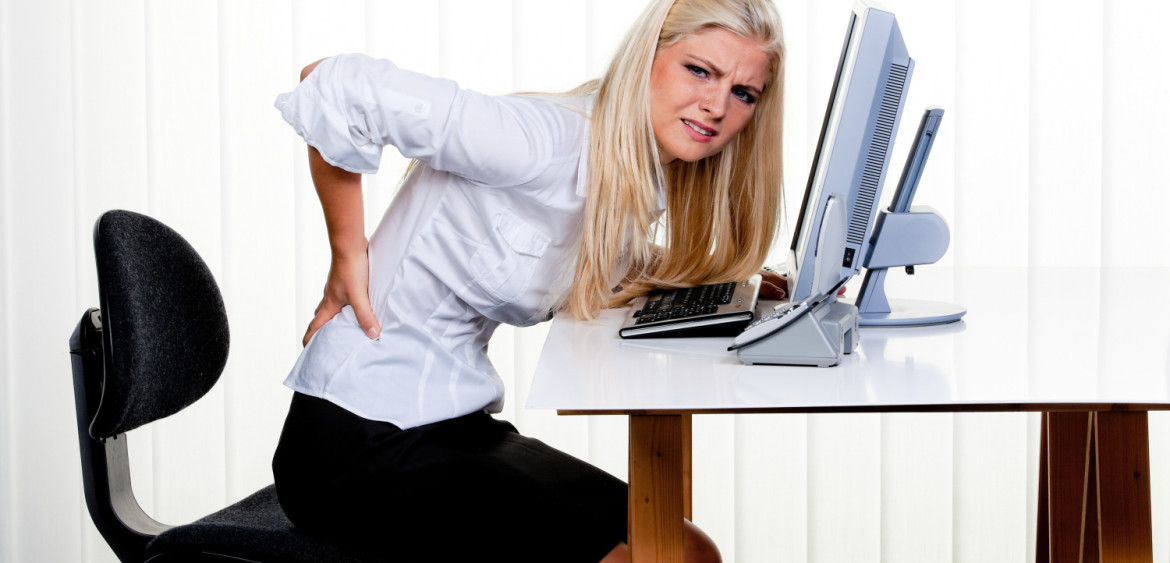Tips For Preventing Back Pain

Though evolutionary advances in the brain department, humans have suffered their fair share of poor traits. The spine, for instance, remained straight while we went around on four legs, but developed its “s” shape to account for balance issues once we became bipedal. This single fact has resulted in the commonality of back pain, specifically pain caused from the normal wear and tear undergone at work. To avoid these altogether, it’s important to take into account all the things you do that lead to pain that can be fixed.
By far the most damaging, lifting (when done incorrectly) puts an enormous strain on the whole of the back and, more specifically, the lower back. No matter the position or the field you work in, there are always moments that require you to lift more than what you are used to. To avoid this, simply ask someone else to carry something you don’t feel comfortable lifting. If this can’t be avoided, lift with the legs. Before this, however, size up what you’ll be picking up and choose a secure way to grip it. Once ready to life, squat down while keeping your back straight. As you lift up, this will make sure the strain goes to the thighs and butt, not the back. When you need to put it down, squat once more. Though this may not feel comfortable tosome, it is essential for saving yourself a pulled back or ruptured disc. Remember, though, that if it is far too heavy, do not try to play the hero. It’s far less embarrassing to ask for help than to hurt yourself because of your ego.

Often referred to as “the core” by exercise enthusiasts the world over, your abdominal and back muscles are key components of keeping undue pressure off of the spine. This means sitting and standing straight combined with any number of routines. Including crunches, pull-ups, squats, planks and almost anything else you can think of, aim to do a set number of these at least three times per week for at least one hour. Though sitting and standing straight may be harder to do since you probably slouch out of habit, doing so will come much easier the stronger the muscles get.
Ditch the heels. You evolved to walk with your ball and heel touching the ground together. By pushing the heels up, you now walk on your toes, which causes the pelvis to position itself further forward than it is designed to be. Your upper body, then leans itself further backward to compensate. The resulting posture causes strain on not just the lower back, but also the hips and knees. Likewise, the head juts forward, leading to neck pain. While occasionally wearing a nice heel is okay, those that do so on a regular basis are in for some serious pain as they age.
If you are obese or overweight, your spine and your body are undergoing serious changes for the worse. Many suffer sciatica and low back pain because of herniated discs. These are caused when too much pressure is put on the spine, leading to too much compression. Also, pinched nerves and piriformis syndrome rear their ugly heads as the fat, with nowhere else to go, begins to fill in spaces between bones. Finally, don’t forget spinal arthritis that arises because the weight strains the spinal joints. All in all, extra fat does nothing but harm your body. Start shedding pounds through a combination of exercise and eating healthier. Losing weight is never a fast road, but it is doable so long as you are consistent and dedicated.
You don’t have to be another statistic. Consider printing out the new infographic from Trimotion Industries and posting it where you will see it. On-the-job back pain, constituting a whopping 20% of all work related injuries, is avoidable so long as you know what to avoid. Luckily, most of the causes are things that can be consciously evaded. From losing excess weight to practicing good lifting form, you can keep your back in working order for a long time.
